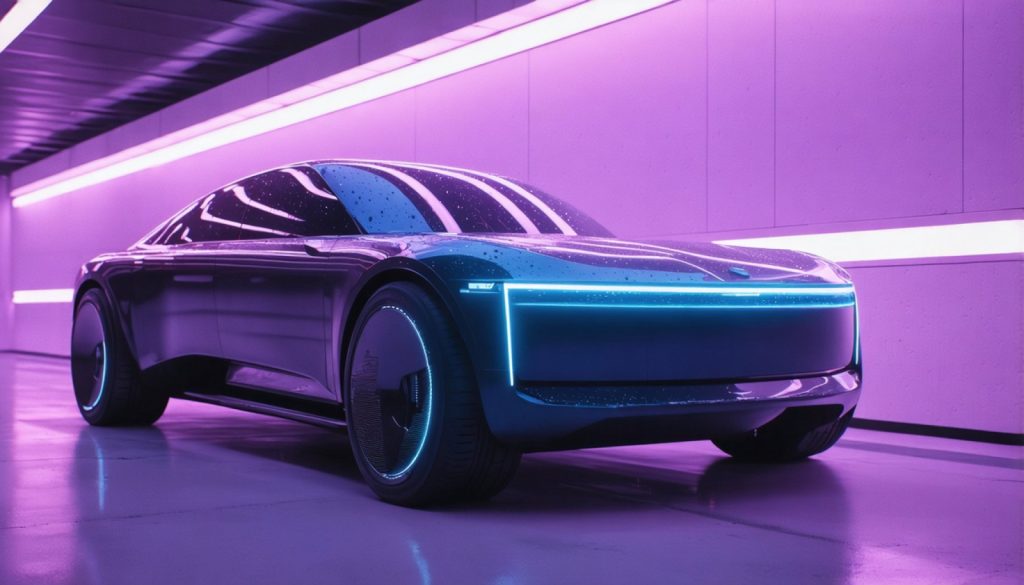- A rumored design evolution might introduce a touch-sensitive glass frame for future Apple Watch models, inspired by a recent Apple patent.
- The concept envisions replacing traditional materials like aluminum with an unbroken glass shell, enhancing both aesthetics and interaction.
- This innovation surfaced on Weibo, aligning with an Apple patent for a “wearable electronic device with a glass shell.”
- The glass frame may transform user interaction through customizable touch controls on the watch’s sidewalls.
- Full implementation of this innovation may take years, with interim updates such as health tech improvements and a possible plastic redesign for the Apple Watch SE 3.
- Future explorations might include dual displays and AI-integrated cameras, enhancing smartwatch capabilities.
- Despite potential challenges, a glass-framed Apple Watch could redefine wearable tech, combining luxury with utility.
The future of wearable technology might just glitter with the sleek allure of glass, if whispers from the tech world hold any truth. Rumors are swirling about a groundbreaking design evolution for the Apple Watch, envisioning a device that melds function with elegance through a touch-sensitive glass frame.
This innovative concept, inspired by a recent Apple patent, suggests a giant leap forward in watch design—where aluminum and titanium give way to an unbroken glass shell. Imagine the shimmering elegance of a glass frame that transforms the ordinary wristwatch into a cutting-edge interface. This isn’t just about aesthetics; it’s about reimagining how we interact with wearable technology.
The idea surfaced on China’s bustling digital forum, Weibo, where a well-known leaker hinted at Apple’s secretive developments. Notably, this tantalizing glimpse into the future syncs with an official Apple patent, revealing a “wearable electronic device with glass shell.” The bold vision encompasses a glass façade stretching across the watch’s surface, blurring the lines between display and housing.
A glass-framed Apple Watch could reinvent user interaction. Its sidewalls could come alive with responsive touch capabilities, offering dynamic interface changes. Envision customizable touch controls that morph from stopwatch functions to music controls with a swipe. It’s a design philosophy that screams Apple—minimal, intuitive, and sophisticated.
While this vision is thrilling, don’t expect an all-glass model just yet. Current projections place such innovations years down the line, teasing future Apple Watch iterations with this revolutionary concept. What’s more immediately on the horizon is the possibility of integrating health tech improvements like blood-pressure monitoring for select models in 2025 and a potential plastic redesign for the Apple Watch SE 3.
Yet, the excitement doesn’t end there. Apple might also explore dual displays and integrated cameras that infuse AI into the watch, drawing a new blueprint for what smartwatches could become. Picture a device that understands its wearer and environment, adapting to serve seamlessly.
Of course, patents and concepts don’t always culminate in consumer products. The journey from blueprint to boutique is fraught with technical challenges and market considerations. However, if Apple does cross this glass bridge, it could redefine the landscape of wearable tech, merging luxury with utility like never before.
In a tech ecosystem eager for the next big wave, an Apple Watch glass frame could very well be the precursor to a dazzling chapter in technological innovation, showcasing a marriage between design elegance and functional gadgetry that only Apple can orchestrate.
The Future Unveiled: What a Glass Apple Watch Could Mean for Wearable Tech
Exploring the Glass Apple Watch Concept
The tech world is abuzz with rumors of a revolutionary new design for the Apple Watch, which could feature a glass frame that melds elegance with advanced functionality. This speculative shift from traditional materials like aluminum and titanium to a sleek, continuous glass design promises to enhance the user interface with touch-sensitive capabilities. This innovation is reportedly inspired by a recent Apple patent and satisfies the market’s thirst for groundbreaking wearable technology.
The Evolution of Design and Interaction
A glass-framed Apple Watch would fundamentally redefine user interaction. Traditional elements like buttons and dials could be replaced with a seamless touch interface across the watch’s sidewalls. Imagine the ability to swipe or tap to change functions—whether switching from timekeeping to fitness tracking or controlling music playback. This would embody Apple’s signature design aesthetic: minimalistic, intuitive, and sophisticated.
Pressing Questions and Market Forecasts
1. How soon can we expect this design?
– The move to an all-glass Apple Watch is still conceptual, with many speculating a wait of several years. However, Apple is likely to start integrating some elements of this design in upcoming models.
2. How will this affect pricing?
– While no official pricing has been revealed, a shift to a glass framework may lead to higher production costs. This could result in a premium pricing tier for an all-glass Apple Watch, akin to Apple’s luxury positioning in other product lines.
3. What are the security implications?
– Glass materials generally raise concerns about durability and shatter resistance. Ensuring the glass is robust enough for daily wear will be a crucial development hurdle for Apple to overcome.
Real-World Use Cases
For fitness enthusiasts, a touch interface that can instantaneously switch between different modes like heart rate monitoring, GPS mapping, and performance stats would transform workouts. Similarly, professionals could seamlessly blend tech with style, using customizable features for meetings and alerts without needing their phone.
Emerging Trends and Technology Integrations
1. Health Tech Innovations:
– Apple is rumored to incorporate advanced health monitoring features, including potential blood-pressure monitoring and integrated AI for more personalized health insights.
2. Sustainability:
– Apple’s focus on environmental sustainability may influence the choice of glass materials, potentially incorporating recycled or eco-friendly glass.
3. Dual Displays and AI:
– The possibility of dual displays and embedded AI features could advance interaction further, allowing the watch to anticipate and adapt to user needs seamlessly.
Pros and Cons Overview
Pros:
– Enhanced User Experience: Touch-sensitive sides offer a dynamic interface.
– Aesthetic Appeal: The all-glass design promises a striking, luxurious look.
– Potential Health Features: Advancements in health monitoring could redefine wearable health tech.
Cons:
– Durability Concerns: Glass can be prone to scratches and shattering.
– Potential High Cost: The premium design may not be affordable for all users.
– Technical Challenges: Implementing seamless interaction requires overcoming significant engineering hurdles.
Conclusion: Actionable Recommendations
For those considering a foray into wearable technology, keep an eye on Apple’s patent developments for an idea of future trends. If you’re in the market now, consider models with current features like ECG and fall detection, which provide solid functionality and health benefits. As technology evolves, prepare for the next wave of innovation by staying updated on product announcements and patent filings from Apple.
For more information on Apple’s latest innovations, you can visit their corporate website at Apple.










